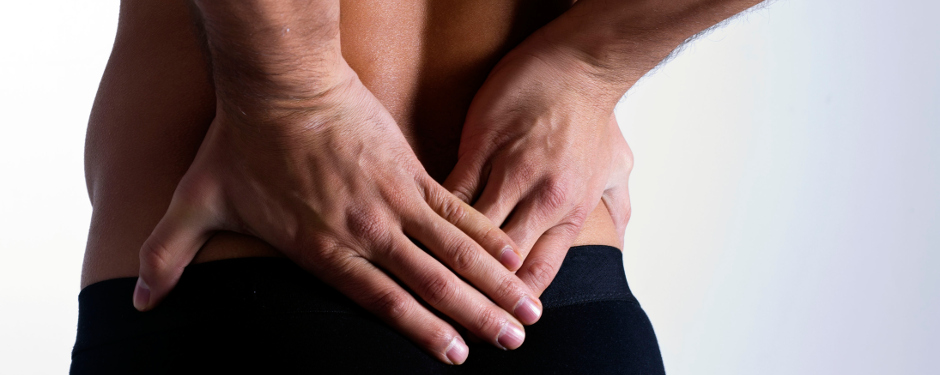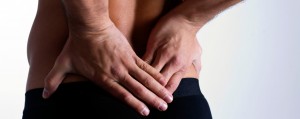

By Danielle Mah, Physiotherapist with Rugby Canada Mens National Program
Many people wonder if Pilates is the answer for back pain.
The easy answer is ‘Yes’, and ‘No,’ which probably doesn’t help most of you out there.
Back pain, as you may have gathered, can manifest itself in many ways. It can have many causes, long or short histories, and can be masking other conditions.
There is a buzz out there at the moment regarding Pilates, and there have been a few controversial articles regarding its usefulness in treatment for back injuries. I want to try and dispel the misconceptions and provide advice to those who are looking for an
active remedy to back troubles.
First thing first. ALWAYS get a professional assessment by a chartered physiotherapist to quantify and diagnose your back pain. It may not be appropriate or safe for you to start exercising, depending on your condition, and even though Pilates may be recommended (as on occasion by your GP), some exercises in the class may need to be cautioned or avoided. A trained physiotherapist with a knowledge of Pilates will be able to provide the appropriate advice.
Secondly, from a physiotherapist’s perspective, what is Pilates anyway?
It is a series of exercises that focus on the ‘control of movement’. When it comes to exercise, Pilates epitomises the age-old theme: ‘It’s not what you’re doing but how you do it that counts.’ Pilates is not a routine that will leave you dripping in sweat, or crawling on your elbows out the door. But it will give your stomach and backside something to remember whilst having you walk out of a class with more confidence in your posture than when you came in.
When I teach myself, I may seem a stickler for technique, but that’s what it’s all about. Some of the individuals in my class may be working away thinking they’re doing a great job until I alter one small detail in their technique, and they wonder why lifting their leg
or sitting up off the floor has become so hard!
Why the answer is YES to Pilates for back pain
Pilates can help with control. It concentrates on the muscles that support the back, which are the deepest layer of abdominals. You may already know about the ‘6-pack’, the most superficial layer being the rectus abdominus, followed by the 2 layers of oblique muscles. Less commonly known are the transverse abdominals, known as the body’s ‘natural corset.’ This is the layer that circumferentially goes around the midsection attaching to the spine at the back, therefore aiding in taking load away from the back when necessary. These are the muscles that are the most useful in helping to support and re-strengthen the mid section, after pain in the back has weakened these muscles. These are also the muscles that are commonly forgotten when doing an ‘ab’ workout. It’s not just about sit-ups.
Also, working the muscles around the pelvis, like the gluteals will further improve stability in movement (balance) and support the back from lower down. Having a stable base in which the back sits takes pressure off the joints in the back. A lot of people’s back pain is one-sided. Feeling a “dodgy left side” or “dodgy right side” is no coincidence. There is no question that the gluteals, or backside muscles, on that side need to be worked on or assessed by a physiotherapist, and can be successfully re-strengthened in a Pilates
regime. I know it has sounded like a lot of YES to Pilates but what about the NO….
Why sometimes the answer is NO to Pilates
NO to Pilates has happened for some patients because they’ve come out of a class and felt worse. or just no better. This can be for a couple reasons. Pilates didn’t work for them usually because they were doing a class that was too hard. If you’ve just come out of a bout of back pain and your physiotherapist has discharged you with the advice of joining up for Pilates and you’ve gone to your local gym and signed up for the first class available, then it might not be appropriate for you. A healthy individual will find Pilates challenging, and they are doing it for strength and fitness. With recent or previous back pain, you are doing Pilates for rehabilitation. This is a slightly different recipe.
As always, the body will go through the path of least resistance….too hard means your back will go back to its old habits to complete the exercise putting undue stress on you and perhaps re-injuring.
As we all know, there are good and bad in every profession, and the same goes for Pilates. There will be very intuitive instructors, who will provide individual correction and feedback, work at the appropriate levels, and provide alternatives to each exercise depending on your level. Conversely, there will be the instructor who stays at the front
of a 30 person class, providing no feedback, working through their rigidly rehearsed regime.
Ideally, if you’ve had pain you should be assessed first by your physiotherapist, then undertake an initial individual session (more if necessary) with the instructor to learn the basics and make sure that your level is safe for a class environment. This way, they know where your weaknesses are, and it allows you to ask any questions if you need to, outside of an intimidating class environment.
Lastly, if the class is too big you can be sure that it will be too difficult for the instructor to provide the ideal amount of feedback and attention to each individual. This is like driving a convertible in Ireland in the winter…It doesn’t make sense!!
I suggest attending a class size with a maximum of 12 to 14 people. It may be useful to ask how big the class is before signing up.
In Conclusion
A very well progressed patient of mine, who is continuing to work through debilitating back pain had been to many different classes after being told by 3 separate GP’s to “just go do Pilates.” She suffered through a previous 6 weeks of Pilates where she was consistently uncomfortable, unable to complete very many of the exercises, and was eventually told by the instructor that she didn’t know what to do with her. This, as you can imagine, was very discouraging.
This is the experience in Pilates that is definitely on the NO side of the issue.
However, this client has completed most of her hands on physiotherapy treatment and is
continuing a course of Pilates with me at D4 Pilates (after being assessed individually with the exercises). She is progressing well and feeling empowered by her newfound strength.
The client said it best when she explained that despite her GP’s advice of “just doing Pilates,” she has now realised the what it is like to really learn the exercises. This time we worked together to teach her “how to do Pilates.” Knowing what she’s supposed to feel and working at the very basics before progressing, she has come farther and progressed more than she’d ever had before.
Danielle Mah is a chartered physiotherapist with the Physio Company, and an instructor with D4 Pilates. Her Clinical/Sports Rehab Pilates class happens Thursday mornings, 7.30am, at the Factory on Barrow Street.


